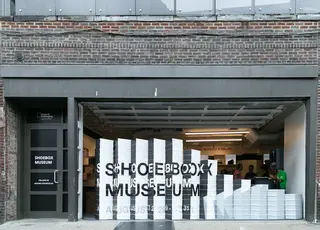
Though shoeboxes are ubiquitous, their function and design vary across the industry and beyond. Today, not only are kicks a canvas of expression, but so too are their shoeboxes. Paper packaging is at the heart and sole of shoeboxes, which have evolved not only as durable, smart and protective delivery assets, but also as storytelling vehicles for brands, forms of art and even collectors’ items.
During a pop-up exhibition in New York’s Lower East Side, the Paper and Packaging Board showcased some of the most influential shoebox packaging, recognizing the work of designers, brands and collaborators who have helped shape customer experiences for decades. Curated by Matt Halfhill, founder of the sneaker blog Nice Kicks, the Shoebox Museum: Icons and Innovators in Sneaker Packaging event featured a unique collection of boxes that created memorable journeys for consumers and cult-like followings for brands like Nike, Vans and Air Jordan.
Outside of a museum showroom, the impact of shoeboxes can be seen in many ways. Beyond the safety and security they provide, shoeboxes help brands set the tone for the product inside through graphic art, interesting textures and innovative construction. For online shoppers, the first physical interaction they have with a shoe brand might be when they open a shoebox and try on the sneakers inside. Yee says this is why the unboxing experience is crucial.
How Shoebox Design Can Make a Difference
With the sneaker industry growing, paper packagers and designers can continue to make a mark and, more importantly, a difference. The sneaker industry is projected to reach over $196 billion in value by 2030—the safe passage and consumer experience for nearly all of those goods is powered by paper-based packaging.
Today packagers are rethinking traditional packaging with creative solutions to make our everyday lives better. Check out a behind-the-scenes look at The Next Great Package, as two designers compete to create a shoebox for Zappos that fits the needs of customers with varying physical mobility.
The impact of the shoebox should not be overlooked.



